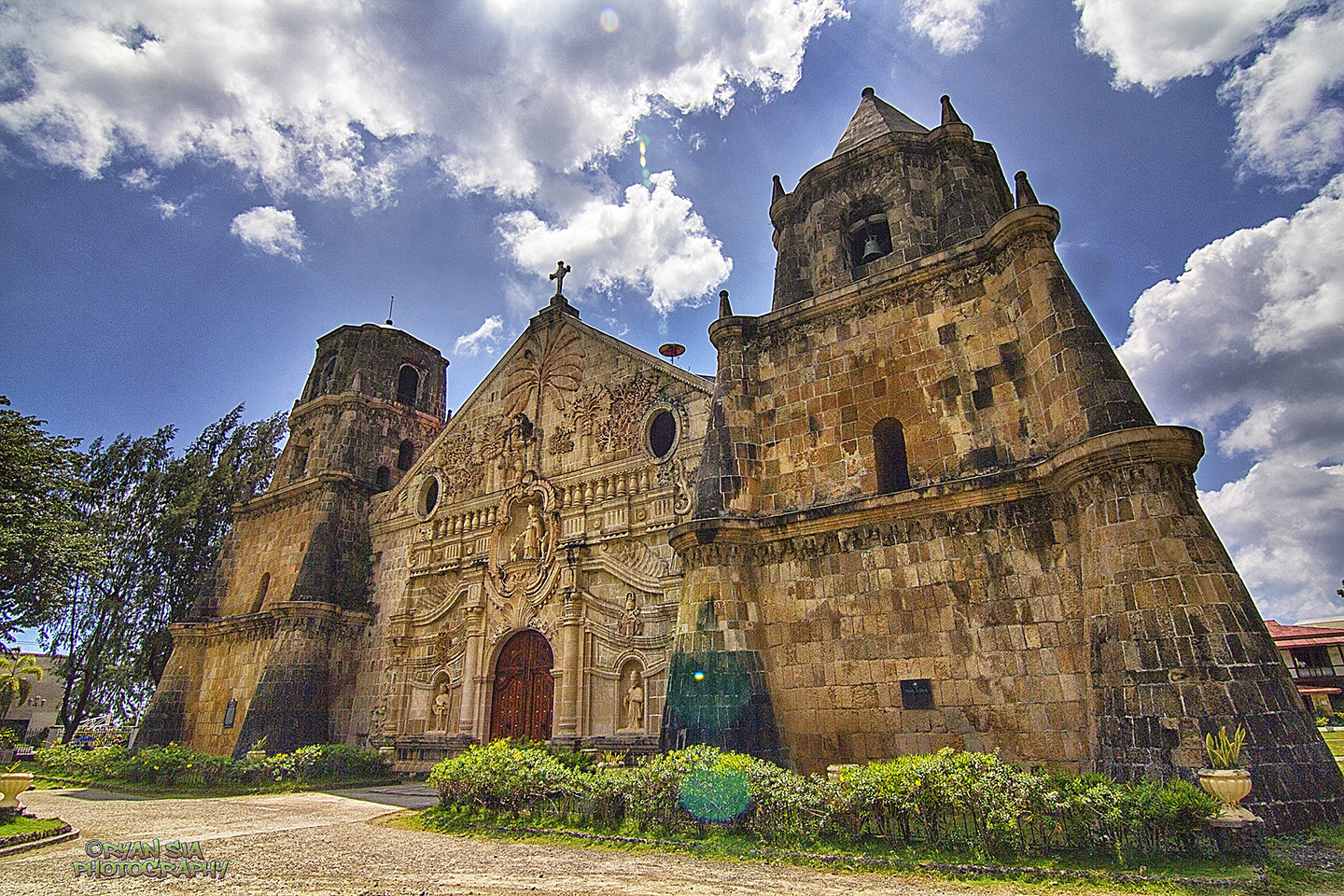Miag-ao is a town in southern Iloilo, Philippines that has a rich history and cultural heritage. The name of Miag-ao has several disputed etymologies, but one of the most widely accepted is that it was derived from the plant named Miagos or Osmoxylon lineare, a flowering plant that used to grow abundantly in the area when the Spaniards arrived. Another version states that a native named Miyagaw gave his name when asked by the Spaniards for the name of the place.
A settlement in Damilisan was recorded by Spanish Map early in 1700 with 13,493 people and 2,974 houses. Miagao gained independence as a municipality in 1716, prior to that it was an Arrabal of four different towns in southern Iloilo. In 1731, Miag-ao had its first captain and teniente mayor after an election was held in Guimbal.
Geographically, Miag-ao is a coastal town with a hilly to mountainous terrain, with most of the flat areas found along the town’s major rivers such as the Naulid, Tumagbok, Oyaoy, Bacauan, Tabunacan, Oyungan, Lanutan, and San Rafael rivers. A mountain range forms a natural boundary between Miag-ao and the province of Antique to the north. The highest point in the municipality is the summit of Mount Tulajon, located in Barangay Ongyod, with a height of 1,100 meters above sea level.
Miag-ao, Iloilo is a charming and historic town that offers a wealth of things to do for visitors. Here are some of the top attractions and activities to check out:
1. The Miagao Church

One of the top tourist destinations in Miag-ao is the Santo Tomás de Villanueva Parish Church, also known as the Miag-ao Church. The church was declared a UNESCO World Heritage Site in 1993, along with three other Baroque Spanish-era churches in the Philippines: San Agustin Church in Manila, Nuestra Señora de la Asuncion Church in Santa Maria, Ilocos Sur, and San Agustin Church in Paoay, Ilocos Norte. The church is a beautiful example of Baroque architecture and a must-visit for tourists.
2. Visiting the Miag-ao Hablon Weaving Showrooms

Hablon is a type of weaving that is common in the Panay region of the Philippines, including Miag-ao, Villa and Antique province. Visitors can visit showrooms in the town proper and in Brgy. Indag-an to see hablon products on display, such as shawls, barongs, gowns, clothing material, accessories, and storytelling dolls wearing hablon dresses. Supporting local products such as hablon helps the local economy and is a way of preserving the community’s culture and dreams.
3. The University of the Philippines Miag-ao campus

The University of the Philippines Miag-ao campus is a satellite campus of the prestigious University of the Philippines system and is conveniently located in the heart of the town of Miag-ao. Visitors to the campus can enjoy a unique opportunity to explore the facilities and learn about the various academic programs and initiatives offered by the university. Whether you are a prospective student, an educational enthusiast, or simply interested in experiencing the rich culture and history of the UP system, a visit to the UP Miag-ao campus is an experience you won’t want to miss. With its state-of-the-art facilities, knowledgeable staff, and commitment to excellence, the UP Miag-ao campus is a premier destination for students and visitors alike.
4. Strolling the Streets of Miag-ao
A Journey through Time: Exploring the beauty of Miag-ao’s well-preserved Spanish colonial architecture and the vibrant daily life of the town is a must-do when visiting. Taking a leisurely walk along the streets of Miag-ao is an excellent way to immerse oneself in the town’s unique character and rich history. The charming cobbled streets and colorful buildings provide a scenic backdrop to the bustling street life, giving visitors a glimpse into the town’s fascinating past. The experience of strolling through Miag-ao is a truly authentic one that allows visitors to immerse themselves in the local culture and gain a deeper understanding of the town’s heritage. So, don’t miss out on this chance to take a step back in time and savor the town’s captivating character.
5. Visit Tinagong Dagat
Miag-ao is not just known for its historic landmarks, it also holds stunning cascades, caves, a mysterious hidden lake, unique rock formations, rice terraces, and more. Danao sa Miag-ao, also known as Tinagong Dagat (hidden sea in English), is a hidden lake situated in the forested area of Barangay Ongyod. The lake is said to be ten times bigger than an ordinary swimming pool and is elevated approximately 3,000 feet above sea level. Hiking to Tinagong Dagat is a great way to experience the town’s natural beauty. Along the journey, visitors will be welcomed by breathtaking scenery, including rice terraces, green landscapes, and Rafflesia in full bloom. There is also a hilltop viewing area with a green grass carpet and a panoramic view of Miag-ao and other mountains in the province. Visitors can also try eating edible wild berries and trek to the big rock formation on the other side of the lake, locally called Bato. The rock is surrounded by rice terraces, tall leafy trees, and a grove of pines.
Whether you’re a history buff, nature lover, or just looking for a unique experience, Miag-ao has something to offer for everyone. So pack your bags and head to this hidden gem in the Philippines today!




leave your comment